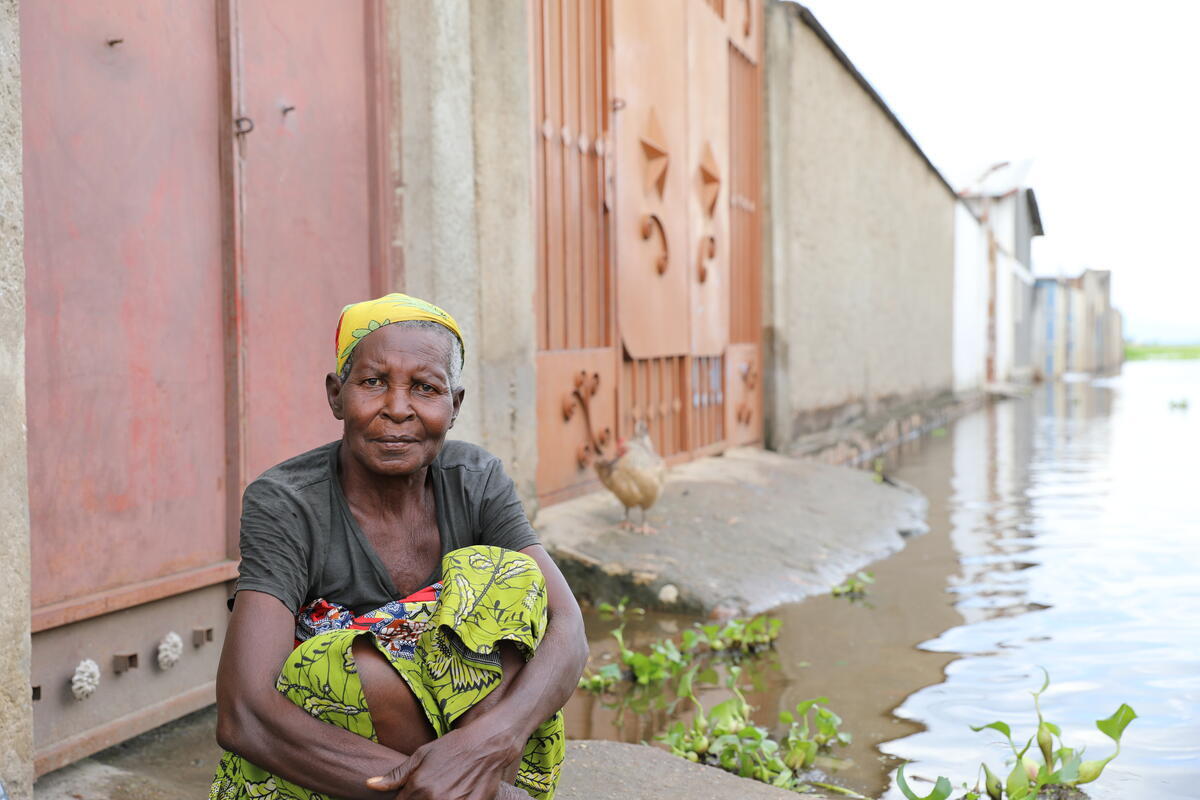Somalia: AHC completes mission, pledges scaled-up efforts for displaced
Somalia: AHC completes mission, pledges scaled-up efforts for displaced
UNHCR's Assistant High Commissioner for Operations, Judy Cheng-Hopkins, who has just finished a four-day trip to Baidoa and Galkayo, in south-central Somalia, says she is shocked by the living conditions of people who have been displaced after fleeing recent heavy fighting in Mogadishu, the Somali capital.
In Baidoa, some 230 kilometres north-west of Mogadishu, where nearly 17,000 newly displaced people have arrived, Cheng-Hopkins visited several settlements of displaced people which have swollen with the new influx of arrivals. The new arrivals live in flimsy shelters made of fabric wrapped around sticks. Some families have not been able to find enough material to cover the entire shelter, and the lack of plastic sheeting is leaving them exposed to heavy rain at night.
Since the beginning of February some 365,000 people have fled Mogadishu. Although a few are slowly returning to the city, most say they want to stay where they are for a few weeks to see how the security situation develops. They fear fighting might break out again and some have had their houses destroyed. Others cannot afford the cost of transportation back to the capital. People who lived in settlements inside former government buildings in Mogadishu are also afraid they might not be allowed to settle back there by the Transitional Federal Government, TFG, which has declared its intention to evict them in order to make the buildings operational again.
UNHCR is negotiating with the TFG to make sure these people are relocated on land within Mogadishu which is economically viable and with enough utilities and infrastructure.
After visiting Baidoa, Cheng-Hopkins visited settlements of displaced people in Galkayo, Puntland, some 700 kilometres north of Mogadishu, where nearly 10,000 people have recently arrived. UNHCR has been in Galkayo since January and has distributed non-food items such as plastic sheeting and mattresses.
Cheng-Hopkins said UNHCR's priority should be to target first those who are getting no support from relatives or clan members. Cheng-Hopkins says UNHCR must focus on the internally displaced but without excluding their host communities which are equally needy. She said the UN refugee agency intends to scale up its efforts.
Cheng-Hopkins met with several ministers of the TFG in Baidoa and visited several hospitals which were in dire need of medical supplies. Access to people is key to the humanitarian efforts in Somalia, she said. The operating environment remains insecure and there are fears that flooding might impair access to Afgooye, a town 30 kilometres away from Mogadishu where over 43,000 people have settled. UNHCR has already distributed relief supplies for some 50,000 people in Afgooye and surrounding areas.
On Wednesday, the Italian government flew in 15 tonnes of aid from southern Italy to Baidoa for distribution by the UN refugee agency to thousands of displaced people. The aid, including 3,200 jerry cans, 2,700 blankets, 20 tents, 10 water tanks, four generators, a water purification unit and other non-food items, was trucked to Afgooye where distribution is about to begin.
UNHCR is planning another airlift of relief items in the coming weeks, using the K50 airport located 50 kilometres from Mogadishu which was reopened by the TFG last weekend.
UNHCR will be appealing for more funds shortly to help Somalis displaced within the country and in surrounding countries. We currently have a budget of US$ 5.7 million for Somalia, but that was before the recent exodus of people from Mogadishu.







